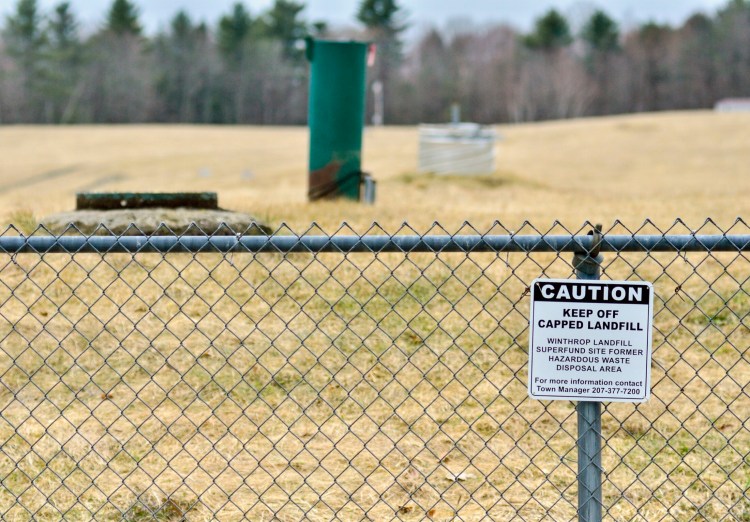WINTHROP — The U.S. Environmental Protection Agency is seeking public input about a proposed amendment to the cleanup remedy for the Superfund site at the former Winthrop landfill that would address sediment.
The enforcement decision document, created in 1985, describes EPA’s plan to monitor and address treatment of the landfill site. The preferred method for addressing sediment contamination was not addressed.
A public informational meeting followed by a public hearing is scheduled for 7 p.m. Tuesday at the Winthrop Town Office. Comments also will be accepted via email or postal mail through May 23.
“We had a risk with the groundwater discharging to Hoyt Brook,” said Terrence Connelly, the remediation project manager. “It was depositing arsenic into the brook’s sediment.”
A pilot study to address that risk was conducted in 2015, and the EPA and United Technologies Corp. installed a barrier on the bank of Hoyt Brook. The study concluded the barrier was effective at preventing polluted groundwater seepage into the brook.
A similar hearing to present the findings was held in 2015 to share the findings of the study, and now that remedy will be written into the decision document.
“The public was in favor in 2015, so I don’t anticipate objections to what the remedy is,” Connelly said.
Town Manager Jeffrey Kobrock said he has not noticed any residents’ concern about this remedy or other remedies on the site.
According to the cleanup activities page for the landfill on the Superfund website, the sediment remedy proposes continued use of the cover system built during the pilot study along with its maintenance, surface water and sediment monitoring, and for institutional control to be placed on the cover system, which prevents excavation or disturbance. It said the estimated cost of the change would be $625,000.
“With the cover system in place and properly maintained, the contaminated sediment should remain inaccessible and should not present a future exposure risk,” the cleanup activities page said.
The 13-acre site is located west of Annabessacook Lake and consists of two adjacent properties, the Winthrop town landfill and the privately owned Savage landfill. Starting in the 1930s, the site accepted municipal, commercial and industrial waste, and then hazardous substances were accepted from the 1950s to the 1970s.
In 1979, the town closed the landfill after discovering an estimated 3 million gallons of various chemical wastes. After its placement on the National Priorities List in 1983, EPA created a record of decision that describes the long-term cleanup action of the site. It did not include treatment of sediments in the landfill.
“We will continue to monitor the pilot study and make sure it’s effective in what it’s intended to do,” Connelly said.
Comments may be sent to Almerinda Silva by email at silva.almerinda@epa.gov;, by fax, to 617-918-0246; or by postal mail, ME/VT/CT Superfund Section, U.S. EPA Region 1, 5 Post office Square, Suite 100, Mail Code OSRR07-1, Boston, MA 02109-3912.
Send questions/comments to the editors.




